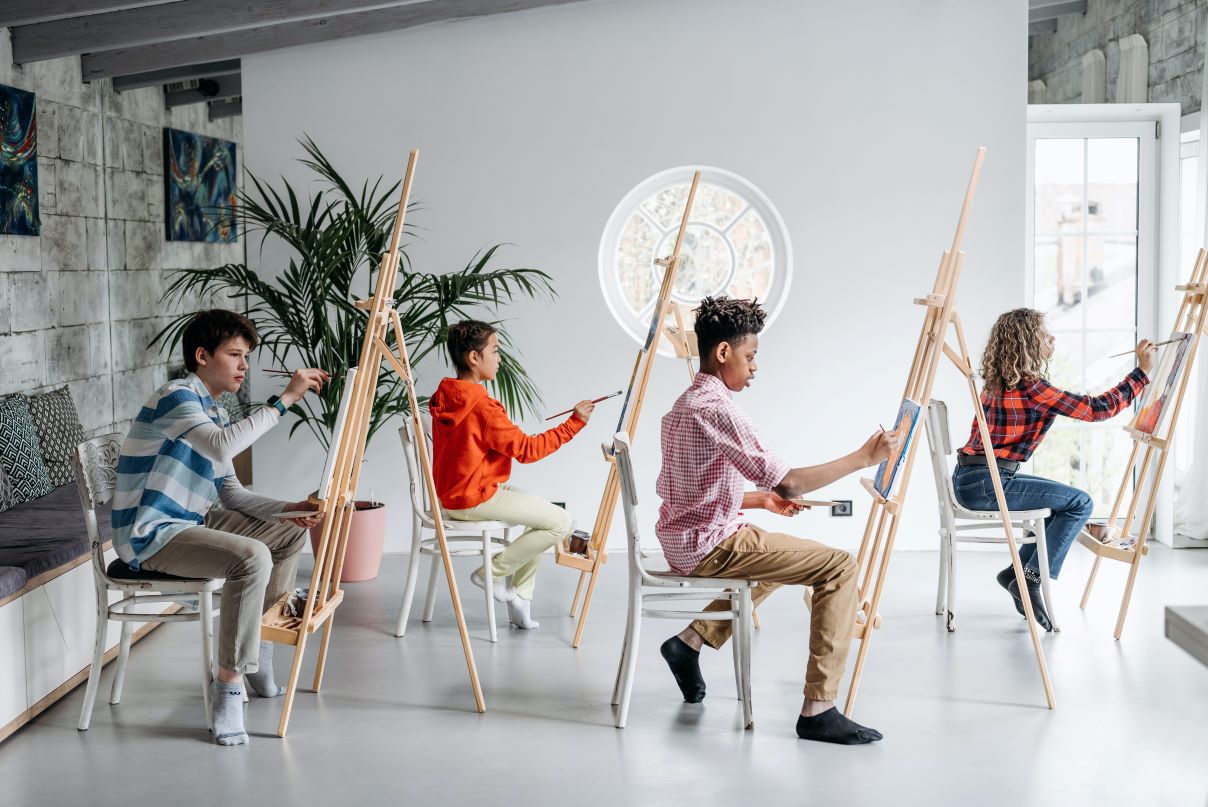Are you searching for a fun and enriching activity to ignite your child’s imagination? Are you tired of letting your child watch cartoons such as Cocomelon nonstop? Do they seem to can’t let go of their gadgets? Why don’t you try painting classes? Together, let us explore how learning to paint can be an incredible journey of self-expression, personal growth, and skill development for your little ones.
Are you a parent living in a condo in Sucat and seeking an enriching activity for your kids? Give your kids the chance to develop valuable skills and unleash their artistic potential right at home. Enroll them in painting classes today and watch as their creativity blossoms within the walls of your own home.
Benefits of Attending Art Classes
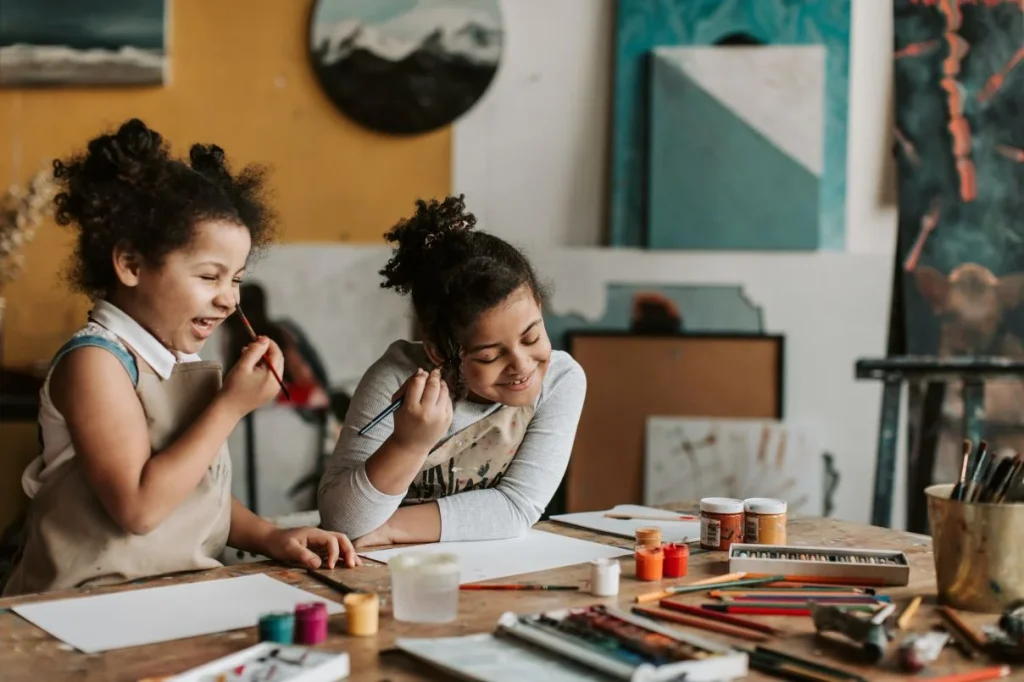
In today’s fast-paced world, it’s crucial to provide children with opportunities that foster their holistic development and nurture their creative potential. One such avenue is through attending different art classes. These specialized programs offer incredible benefits that go beyond simply creating artwork.
Stimulating Creativity and Imagination
Art classes provide a nurturing environment that encourages children to explore their creativity and expand their imagination. Through various art mediums, techniques, and projects, kids can freely express their thoughts, emotions, and ideas. This creative exploration fosters critical thinking, problem-solving skills, and the ability to think outside the box—an invaluable asset in all aspects of life.
Emotional Development and Self-Expression
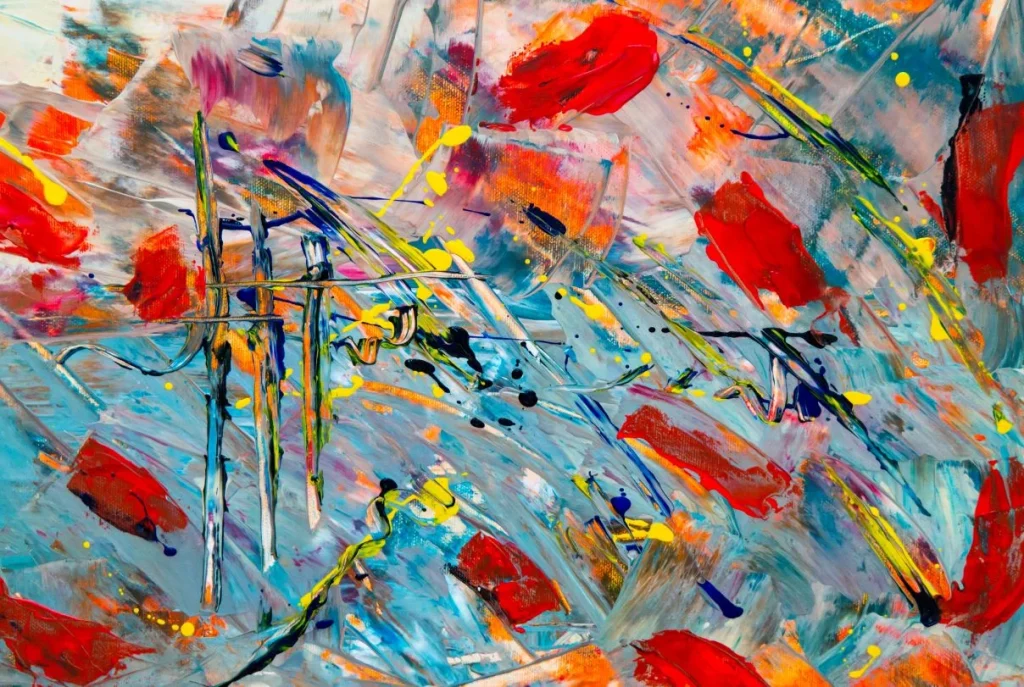
Art is a powerful tool for emotional expression, and attending art classes allows children to develop a healthy outlet for their emotions. Engaging in the artistic process helps kids understand and communicate their feelings, boosting their emotional intelligence and resilience. Art classes provide a safe space for self-expression, enabling children to share their unique perspectives and stories through their artwork.
Fine Motor Skills and Coordination
Participating in art classes enhances children’s fine motor skills and hand-eye coordination. As they handle paintbrushes, pencils, clay, or other art materials, kids refine their motor skills, dexterity, and hand control. These skills not only benefit their artistic endeavors but also contribute to their overall physical development, helping them excel in various activities, such as writing, sports, and everyday tasks.
Confidence Building and Self-Esteem
Art classes provide a supportive environment where children can explore their artistic abilities and gain confidence in their skills. Through positive reinforcement, encouragement, and recognition of their efforts, kids develop a sense of accomplishment and pride in their artistic creations. This newfound confidence extends beyond the art class and can positively impact other areas of their lives, boosting their self-esteem and resilience.
Cultural Appreciation and Diversity
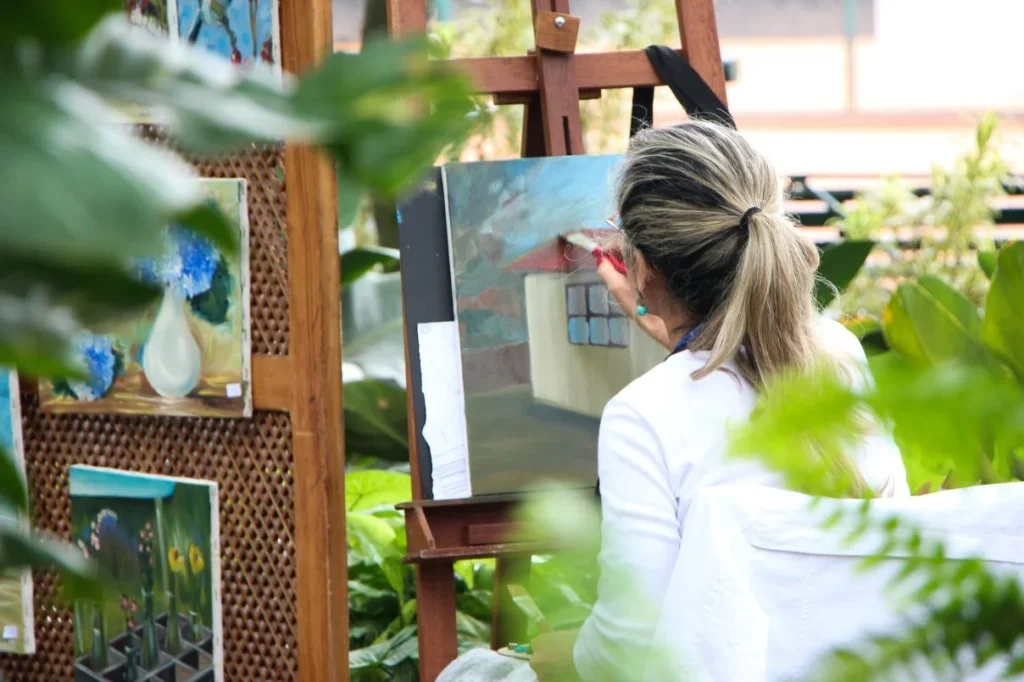
Art classes expose children to diverse art forms, artists, and cultural traditions from around the world. Through art, kids learn about different cultures, histories, and perspectives, fostering empathy, respect, and an appreciation for diversity. This exposure enhances their cultural awareness, broadens their horizons, and nurtures a global mindset.
How To Learn Painting
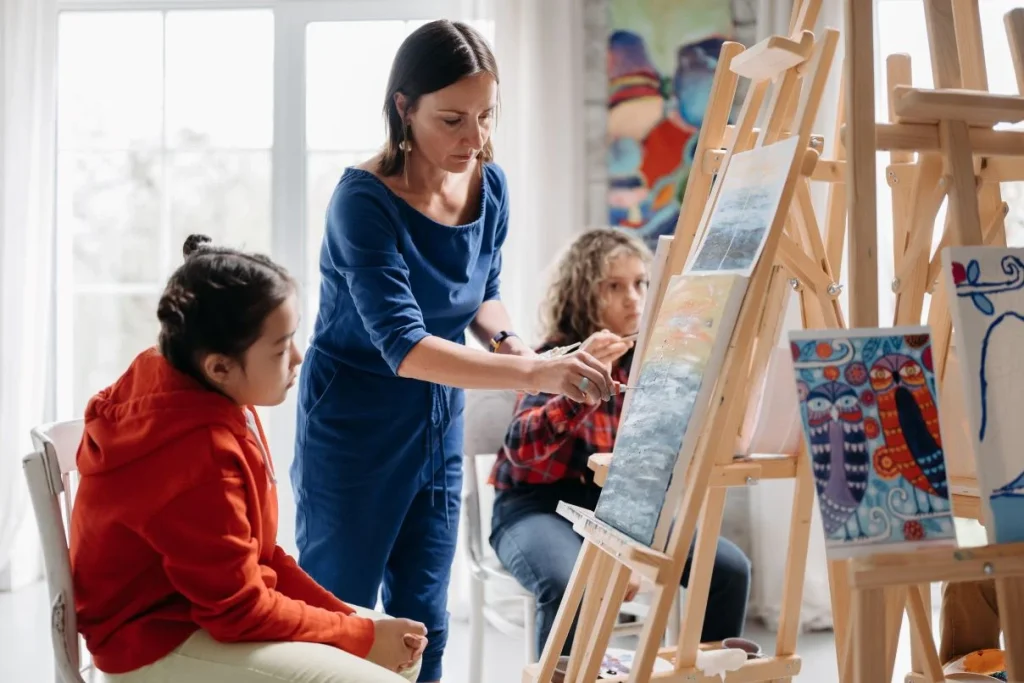
Have you ever been captivated by a beautiful painting and wondered how you could create something equally mesmerizing? Learning to paint is a journey that anyone can embark on, regardless of age or previous experience. Through these steps, your child and even you can become proficient painters, and help you unleash your creativity on the canvas.
Start with the Basics
Learning to paint begins with understanding the fundamental principles and techniques. Start by familiarizing yourself and your child with the essential supplies, such as brushes, paints, and canvases. Explore different paint mediums, such as acrylics, oils, or watercolors, and experiment with various brush strokes and color mixing techniques. Online tutorials, instructional books, or even local workshops can be valuable resources to grasp the basics. This can be a fun bonding time with your child!
Embrace Guided Instruction
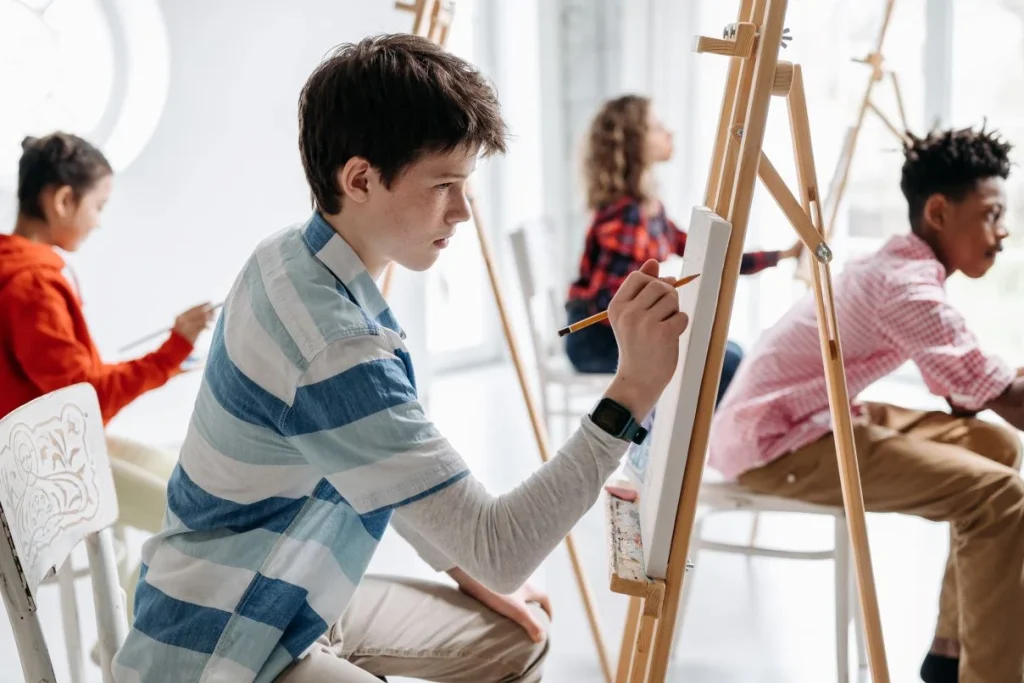
To accelerate your child’s learning process, consider enrolling him/her in painting classes or workshops. These guided instructions provide structured learning environments led by experienced artists who can teach your child the essential techniques, offer feedback, and guide you toward improvement. Whether it’s a local art studio or online courses, the guidance of a skilled instructor can help you refine your kid’s skills and develop their artistic style.
Practice, Patience, and Perseverance
Becoming proficient in painting requires consistent practice. Set aside dedicated time each week to hone your skills. Create a comfortable and inspiring workspace in your home where you can freely express your creativity. Experiment with different subjects, from still life to landscapes or portraiture, and challenge yourself with new techniques or styles. Remember, progress takes time, so be patient with yourself and embrace the learning process.
Seek Feedback and Join Communities
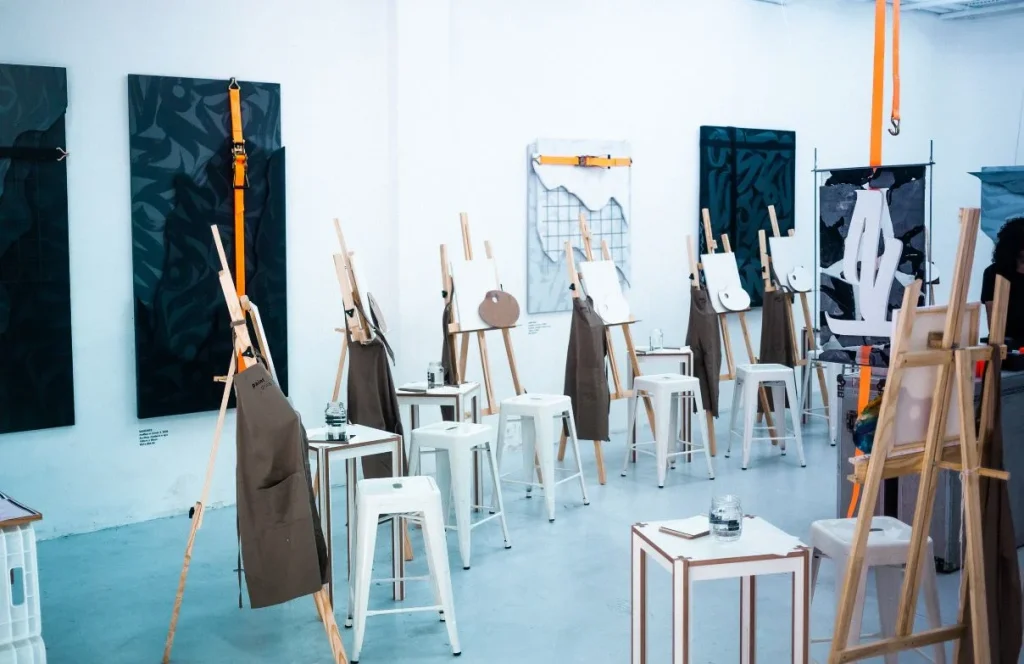
Don’t be afraid to share your artwork with others and seek constructive feedback. Join local art clubs or online communities where you can connect with fellow artists, exchange ideas, and receive valuable critiques. Engaging with a supportive community can boost your motivation, provide fresh perspectives, and foster growth in your artistic journey.
What is the Course of Painting Called?
The course of painting is often referred to as “Painting Classes” or “Art Classes.” These courses offer structured instruction and guidance in the art of painting, catering to individuals of all skill levels. By enrolling your child in a painting course, he or she can receive expert guidance, learn essential techniques, explore different styles and mediums, and unleash his/her artistic potential.
What is the Importance of Learning Painting?
Have you ever wondered why learning to paint is more than just wielding a brush? Engaging in the art of painting offers numerous benefits that extend far beyond the canvas.
Self-Expression and Creativity
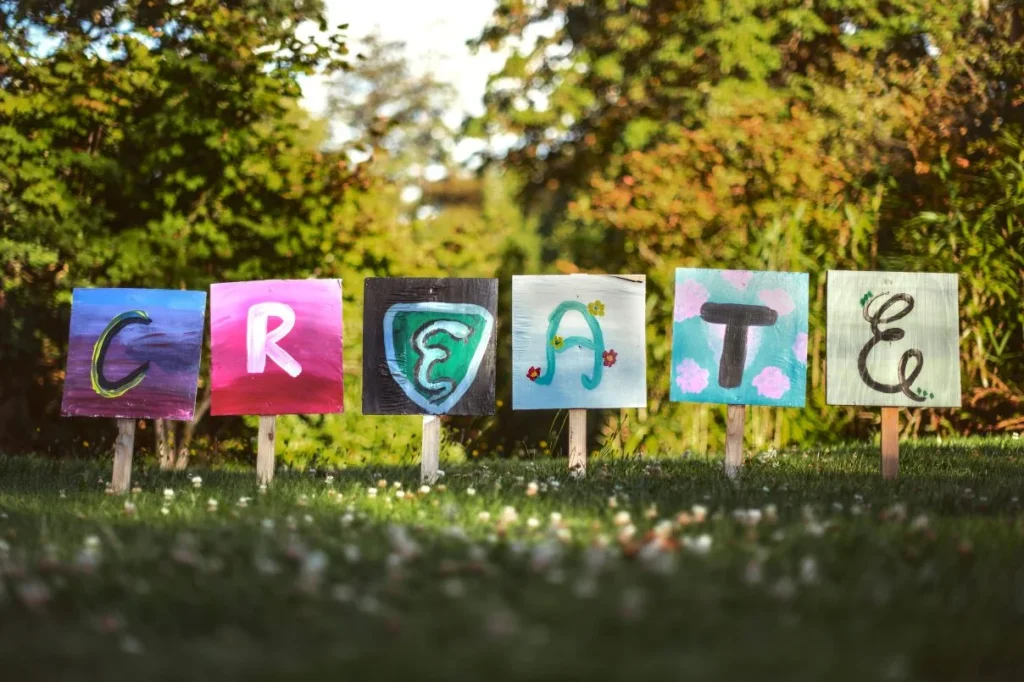
Painting provides a powerful means of self-expression, allowing your child to communicate thoughts, emotions, and ideas in a visual language. Through colors, brushstrokes, and composition, your child can convey his/her unique perspective and create art that resonates with others. Embracing painting unleashes creativity, encourages thinking outside the box, and explores new possibilities in artistic expression.
Painting provides an excellent medium for children to express themselves and unleash their creativity. Here are some ways a child can show self-expression and creativity through painting:
Choice of subjects: Encourage your child to choose subjects that interest them. Whether it’s their favorite animal, a special place, or even an abstract idea, let them express their personal preferences and explore their own unique interests.
Use of color: Colors play a vital role in self-expression. Encourage your child to experiment with different color combinations and explore their emotional responses to different hues. Let them choose colors freely, even if they don’t adhere to realistic representations.
Brush strokes and techniques: Every child has their own way of applying paint to the canvas. Encourage your child to experiment with various brush strokes and techniques, such as bold strokes, delicate lines, or textured effects. This allows them to develop their own artistic style and express their individuality.
Emotions and moods: Painting can be a powerful outlet for children to express their emotions and moods. Encourage them to explore how they feel through their artwork. They can use colors, shapes, and compositions to convey joy, sadness, excitement, or any other emotion they are experiencing.
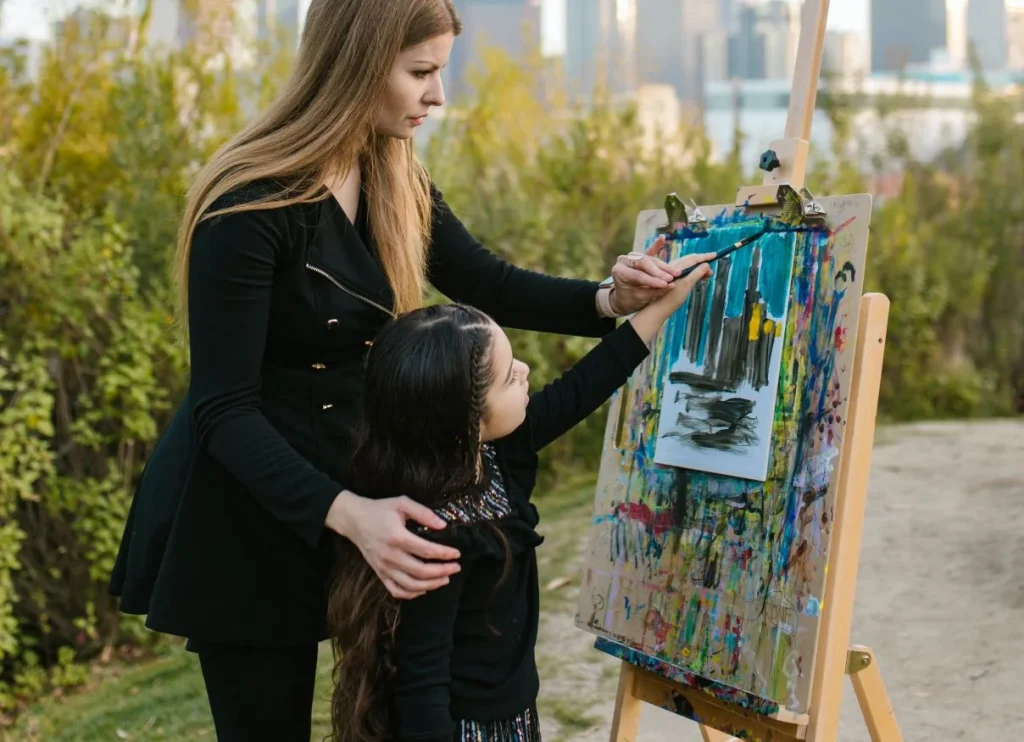
Narrative storytelling: Painting can be a form of visual storytelling. Encourage your child to create narratives through their artwork. They can paint scenes from their imagination, depict a sequence of events, or even create characters and stories.
Experimentation and playfulness: Encourage your child to be playful and experimental with their painting. Let them explore different techniques, mix colors, and try unconventional methods. Emphasize that there are no right or wrong ways in art and that the process of exploration is just as important as the end result.
Personal interpretations: Each child has their own unique perspective on the world. Encourage your child to interpret subjects and scenes in their own way. It could be a realistic representation or an abstract interpretation. By allowing them to express their personal interpretations, you nurture their creativity and individuality.
Problem-solving and critical thinking: Painting requires problem-solving skills and critical thinking. Encourage your child to think creatively and find solutions when faced with artistic challenges. This helps develop their cognitive skills while also fostering self-expression.
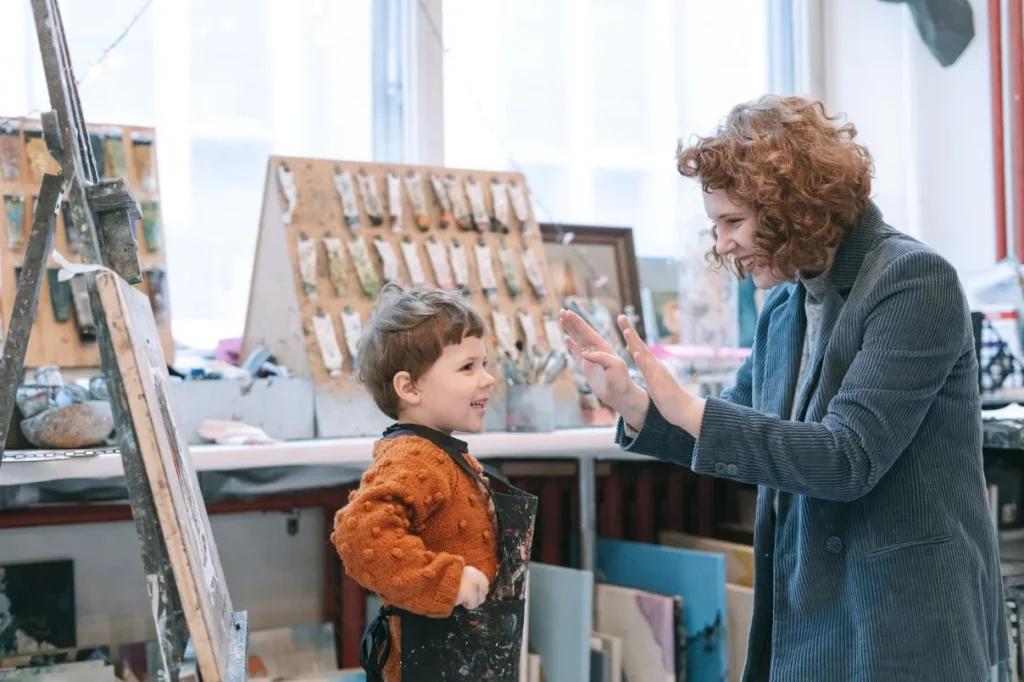
Reflection and self-assessment: After completing a painting, encourage your child to reflect on their artwork. Ask them questions about their intentions, what they like about their piece, and what they would do differently next time. This helps them develop self-awareness and a sense of artistic growth.
Display and appreciation: Display your child’s artwork proudly in your home or create a designated art wall. Encourage family members and friends to appreciate and acknowledge their creativity. This validation and recognition of their artistic expression can boost their confidence and motivation to continue exploring and creating.
Personal Growth and Emotional Well-being
Engaging in painting nurtures personal growth and emotional well-being. It serves as an outlet for self-reflection and allows the exploration of inner thoughts and emotions. Painting can be a therapeutic activity that helps reduce stress, promote relaxation, and improve overall mental well-being. It encourages mindfulness and provides a sanctuary for self-care and introspection.
Developing Observation and Focus
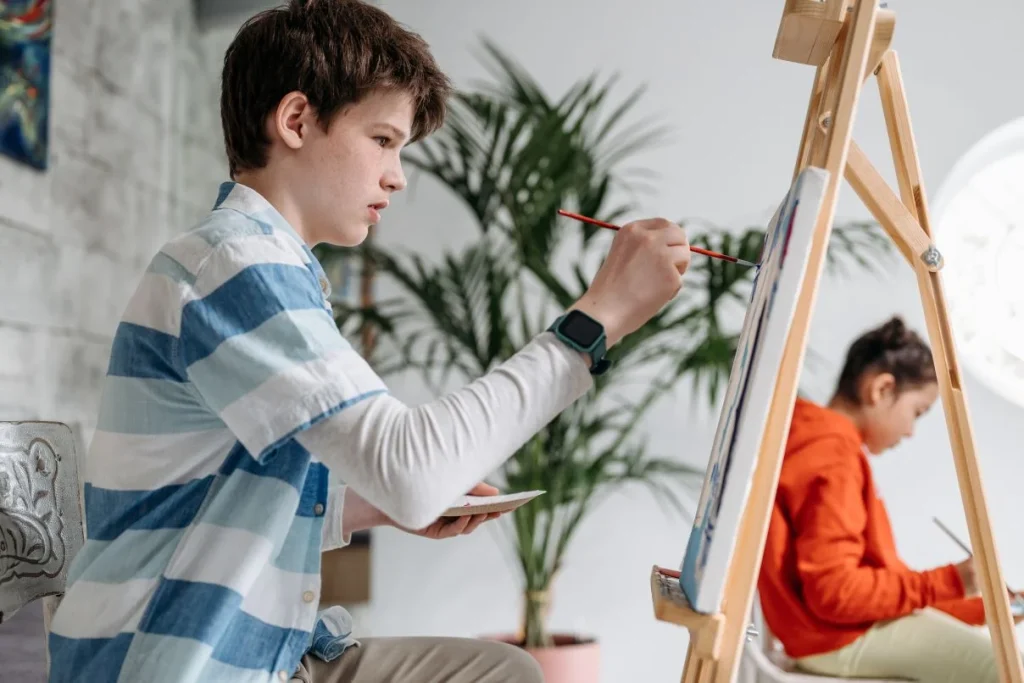
Learning painting cultivates observation skills and enhances the ability to perceive details in the world. By closely examining subjects and translating them onto canvas, it helps to develop a keen eye for shape, color, light, and form. Painting also requires focus and concentration, honing the ability to immerse oneself in the creative process and pay attention to subtle nuances.
Problem-solving and Critical Thinking
Painting is not just about mixing colors and applying brushstrokes. It involves problem-solving and critical thinking. By navigating through the artistic process, encounter challenges such as composition, color choices, and balancing elements within the painting. Overcoming these challenges fosters analytical thinking, decision-making skills, and the ability to find creative solutions – skills that are transferable to various aspects of life.
Appreciation of Art and Culture
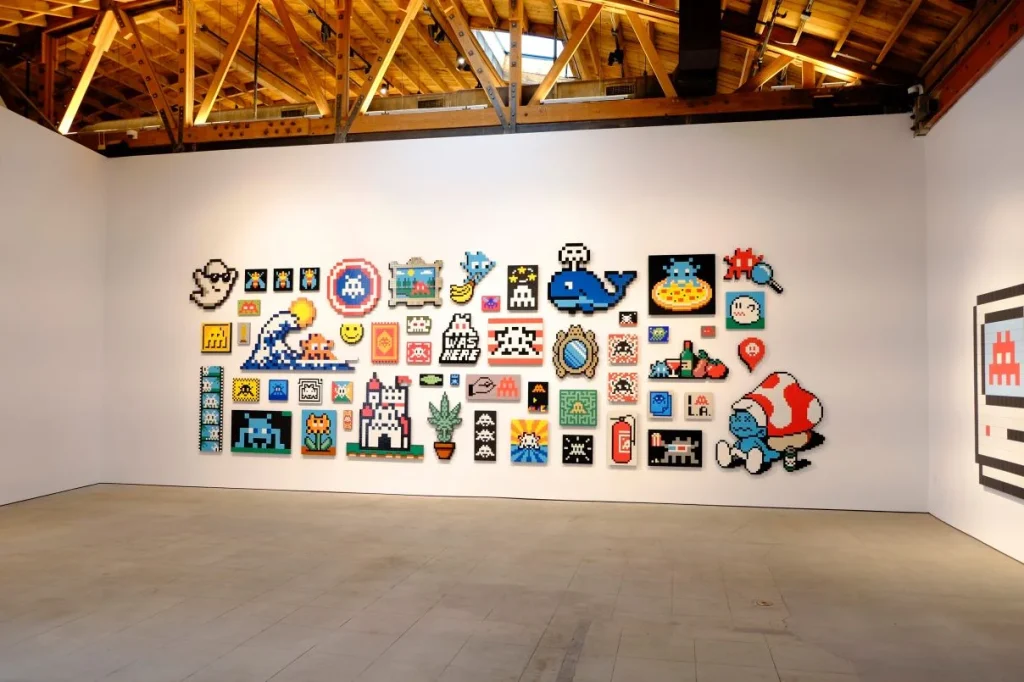
Learning painting deepens your child’s appreciation of art and culture. As you let your child be comfortable and familiar with different styles, and artistic movements at a young age, you will help your child gain a broader understanding of the diverse expressions of art. This exposure allows your child to connect with the world, engage in meaningful conversations, and develop a well-rounded perspective on art and its impact on society.
Related Blog: Everything You Need to Know about Art and Collectibles


